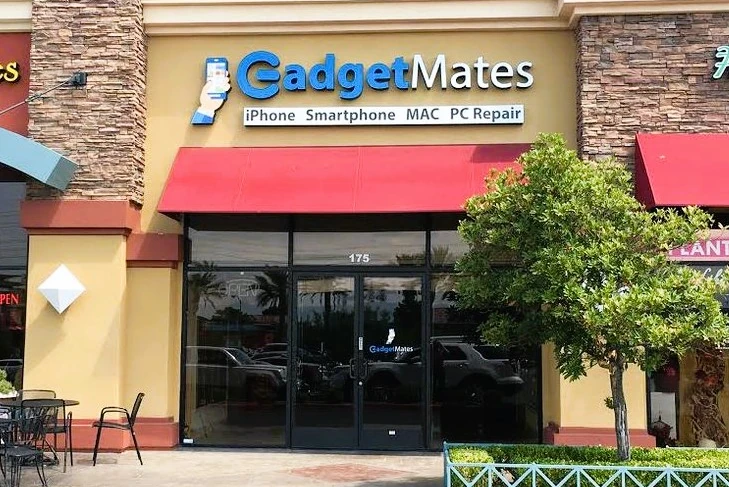Laptop Repair Services
GadgetMates offers fast, affordable laptop repair for Las Vegas & Henderson residents. From cracked screens to motherboard fixes—free diagnostics, 30-day warranty, and same‑day service.
Address #1: 9480 S Eastern Ave #175, Las Vegas, NV 89123, US View on Google
Address #2: 3095 E Patrick Ln Suite 3, Las Vegas, NV 89120, US View on Google
Phone: (702) 444‑0000

Why Las Vegas & Henderson Trust GadgetMates
- Free diagnostics—No diagnostic fee until we find the issue, just like top shops in town.
- Same‑day repairs for most common issues: batteries, screens, DC jacks.
- Price match guarantee—We’ll beat any published local quote.
- 30‑day limited warranty on most repairs.
- Highly rated by locals on Google & Yelp (4.8‑star average).
Common Laptop Repairs We Perform
- Battery replacement for all major brands
- DC/power‑jack repair or replacement
- Cracked screen or unresponsive display replacement
- Keyboard & trackpad fixes
- Overheating, startup crashes, blue screen errors
- Virus, malware removal, system tune‑ups
- Motherboard repair / component troubleshooting
- RAM & SSD upgrades including SSD transitions
- Data recovery & performance optimization

Brands We Service
Expert laptop repair for:
- Apple MacBook (Air & Pro)
- Dell Inspiron, XPS & Latitude
- HP Pavilion, Envy, Spectre
- Lenovo ThinkPad & IdeaPad
- Microsoft Surface
How It Works: Fast & Easy Repair Process
- Free Diagnostic: We inspect your laptop at no cost.
- Get Your Quote: Transparent pricing, no surprises.
- You Decide: Approve repair or decline—no obligation.
- Repair & Warranty: Same‑day turnaround whenever possible, backed by a warranty.
- Pickup or On‑Site: Pick up in-store, or schedule mobile service anywhere in Las Vegas/Henderson.
Frequently Asked Questions
How do I know if my laptop needs repair?
Look for slow performance, overheating, crashes, cracked screen, keyboard/touchpad issues, or power problems.
Should I fix it myself or use a professional?
Unless you’re experienced, self‑repair can cause more damage. Our certified techs perform work safely and efficiently.
How much will a laptop repair cost?
Depends on issue and parts needed. We offer free diagnostics and a detailed quote before you commit.
How long does repair take?
Simple fixes can be done same-day. Complex issues like motherboard repairs may take a few days.
Do you offer warranty?
Yes, we provide a 30-day limited warranty on most repairs—similar to local industry leaders.
What Customers Say
“Fast service, fair price—my battery was replaced in under an hour. Highly recommend GadgetMates!” — Verified Las Vegas customer
“They fixed my cracked screen when others quoted $400. Got it back in one day.” — Henderson local
Visit Our Locations
Walk into our Las Vegas or Henderson store, or call to schedule mobile service at your home or office.
Primary Address: 9480 S Eastern Ave #175, Las Vegas, NV 89123
Open 7 Days A Week
Need Repairs for Another Device?
We also handle phone repair, data recovery, and IT services. Ask about discounts when bundling services.
